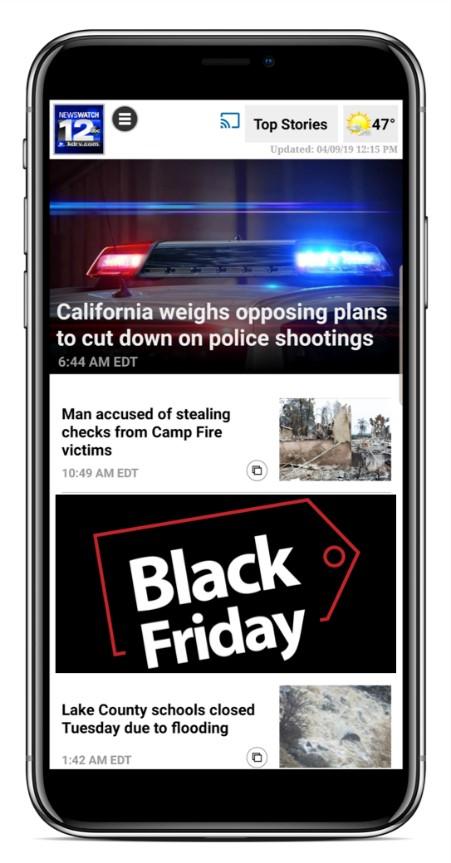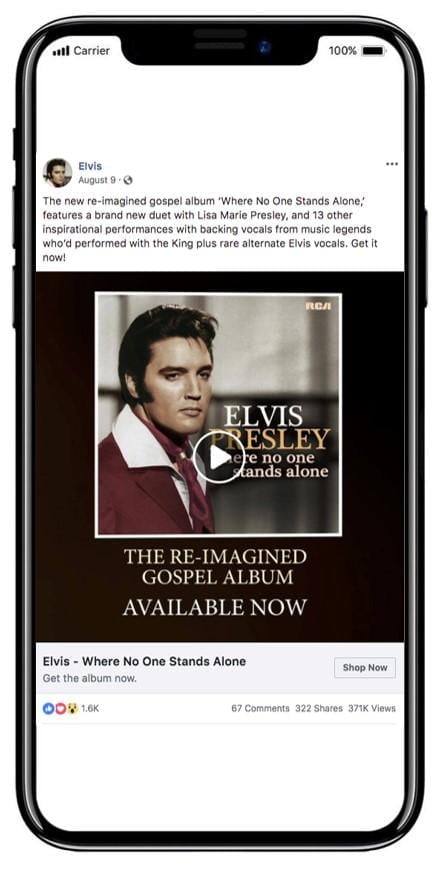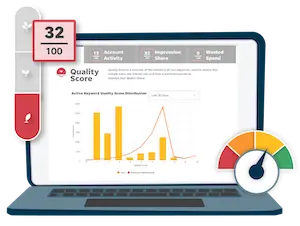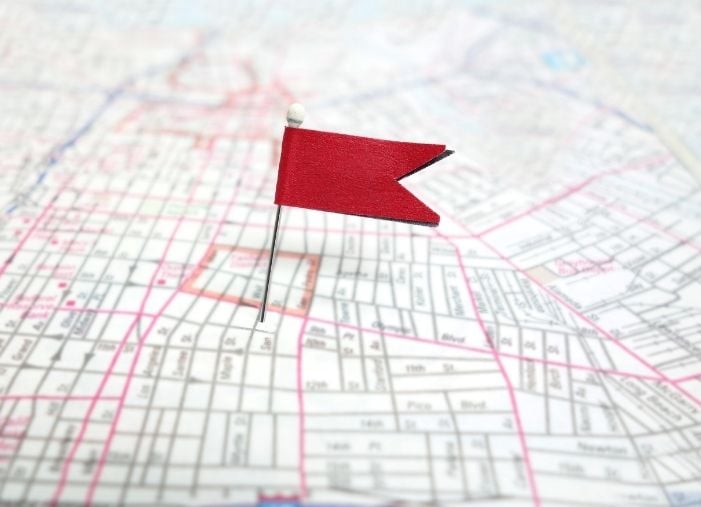
A rapidly growing marketing strategy, sitting right in the middle of the advertising ecosystem, is location-based marketing. According to BIA Advisory Services, marketers will spend over $26 billion in 2019 on geotargeted campaigns.
This specialized marketing technique is a great fit for most, but not all industries. Here is what makes for successful location-based marketing—and a few things you need to avoid.
Location-based marketing: Where it works
Brands with physical locations are the best fit for location-based marketing, which seems obvious but always worth reiterating. These types of businesses are the best fit for geotargeting campaigns because location-based marketing and analytics companies can geofence locations to capture the audiences visiting their locations. Marketers create audiences based on real-world visits, rather than likes and follows on social media, for their geotargeted campaigns. Using this method, marketers ensure they are reaching the right audience at the right time and delivering relevant messaging.
So who could use geotargeting campaigns successfully? This includes any and all retail locations, food and dining establishments, grocery stores, and the list goes on. Here are a few more examples.
Auto dealers
Auto dealers also benefit from geotargeting campaigns, particularly geo-conquesting, that can reach their competitors’ customers. Their large retail footprint, high-value price tag and purchase cycle cause marketers to work hard to reach car shoppers during their final phase of visiting auto dealers.
Pop-ups and seasonal stores
When they meet the right criteria, companies and brands with seasonal stores and time-specific events also create impactful geotargeting campaigns. Think pop-up tax offices and holiday stores.
Marketers for these brands use audiences seen at their locations the previous year to deliver ads to the same group, encouraging return visits the following year. Professional and collegiate sports teams use location-based targeting to reach the audiences that visit their venues each season to encourage future ticket purchases. A trade show that takes place over multiple days at a large venue attracting thousands of attendees is an effective way to capture a business-to-business audience.
Tourism boards
We have also seen travel and tourism boards successfully using geotargeted campaigns. For example, a marketer working to promote tourism in Charleston, SC, might want to convince visitors of Savannah, GA, to visit their location instead next summer.
Ecommerce companies
Marketers at ecommerce companies and consumer packaged goods (CPG) companies can also use location-based marketing in certain situations. Ecommerce brands, whether they have physical retail stores or not, seek audiences that visit competitors that have stores. Similarly, consumer-packaged goods (CPG) companies that stock products in specific stores can use geotargeting. A company with a high-end hair care product found only at salons should use location-based marketing to reach audiences visiting those salons.
Location-based marketing: What to avoid
Those who use any targeting approach know that each strategy has its limits, and location-based marketing is no different. These limits can be both in the quality and quantity of data, as well as regulatory and compliance restraints.
Locations that don’t scale
The most common challenge to developing a successful location-driven campaign is discovering that the locations won’t scale to create a meaningful audience. This challenge can arise from a variety of issues including choosing a single location without abundant foot traffic to analyze, events that do not last long enough to capture the right audience, or smaller markets with limited data to begin with.
Locations like this without much foot traffic wouldn’t work for geotargeting.
Sometimes marketers also find location-based audiences challenging when businesses are clustered tightly together or on-top of one another, like in malls or multi-use buildings. Creating an audience for a store that sits on the street level of an apartment building or visitors to an office located on the 12th floor of a skyscraper is difficult. Location-based marketing and analytics companies may not be able to determine the difference who is a shopper and who lives or works on the floors above or below the desired location.
Products or services available everywhere
Remember that high-end hair care product example? If it’s only available at certain salons, then location-based marketing would work well. But if it’s available anywhere, then this strategy just wouldn’t work.
Products that are ubiquitous and can be found in a variety of locations—think bubble gum, soft drinks, pet food—don’t benefit from location derived insights. These marketers should use other targeting methods, such as demographics and purchase history, to reach their audience more effectively.
Businesses with sensitive data
Brands of certain locations, such as healthcare offices, can pose another challenge for location-based campaigns given the sensitive nature of the data. Privacy compliance firms such as the Network Advertising Initiative, the Digital Advertising Alliance, and TrustArc have requirements for membership, which stipulate acceptable business practices and how their member companies must handle opt-in permissions. They play a vital role in the absence of comprehensive federal legislation to create protections for consumers.
Adhering to these codes of conduct, location-based marketing companies typically don’t allow marketers to create audiences around sensitive locations, primarily healthcare related, nor to engage in any discriminatory practices. These same principles apply to the ability to track or target any person individually. Marketers don’t have any interest or incentive to reach audiences of one, but rather large cohorts of audiences that exhibit similar behaviors or characteristics.
Using location-based marketing successfully
Curious how all those dos and don’ts work in action? Here are a couple of examples of how different companies were able to run geotargeting campaigns successfully.
Geotargeting for Black Friday
A local mall approached KDRV, a TV station in Medford, OR, to build a last-minute TV campaign to drive store foot traffic on Black Friday. There wasn’t enough time to write, cast, and produce a new commercial, but the sales team at KDRV proposed a digital campaign. They knew it would be completed more quickly, but the client was hesitant it would produce results.
By using foot traffic reporting to help the client visualize their own audience, as well as competitive audiences, the sales team effectively conveyed that a digital campaign could reach their desired audience and have a meaningful impact.
The mall, impressed by this reporting, agreed to a digital campaign. Together, they built a location-based audience of existing mall shoppers and visitors to competitive locations to drive more foot traffic for a Black Friday promotion. The campaign served across mobile apps, hitting the budget, delivery, and engagement goals. The process worked so well that the mall agreed to make this an ongoing part of their marketing strategy, rather than a single campaign.
Finding Elvis
The agency Gupta Media worked with Sony Music for an interesting project that used location-based marketing. The goal: drive awareness, sales, and streams for a new Elvis album. While there are a few ways to find Elvis fans, Gupta Media decided to use a location-based audience as a creative approach to increase their reach.
Where is the best place from which to build a location-based audience of Elvis fans? Graceland, of course! The agency created an audience of visitors to Graceland over an extended period of time, and then imported that segment to Facebook as a custom audience. The ad appeared on both Facebook’s website and mobile app, reaching over 55% of the desired audience in the first week.
Because the audience was highly targeted, the CPM cost was 35% higher, but remained 20% lower than the cost for their email list targeting. Despite this slightly higher cost, the value of a targeted audience and excellent results justified the campaign.
What’s next for location-based marketing?
The future for location-based marketing contains three significant elements: regulation, a proliferation of new data sources, and attribution.
Marketers and data providers of all kinds will need to adapt and evolve to new federal and state legislation, beginning in 2020 with the California Consumer Privacy Act. Similar laws already exist in the European Union, and the advertising industry expects more US states to follow California’s example, with potential federal legislation as well. The end goal is a uniform framework that both consumers and businesses willingly embrace, and one that provides more transparency and control over data practices across the entire data ecosystem.
Image Source
The rollout of 5G will create massive sources of highly accurate location data, coupled with billions of new sensors being deployed through the Internet of Things. 5G towers must be clustered together more closely than existing cell phone towers. This tighter clustering means that cell phone carriers can triangulate location with a higher degree of accuracy than they can today. 5G also brings faster upload and download speeds, which will fuel the adoption of more internet-connected sensors across a range of products and industries. As these billions of sensors come online, they’ll generate not only location data, but other valuable sources of data to measure product usage, consumption, and life cycle. How marketers, researchers, and regulatory groups view, analyze, and use this more granular data is yet to be determined.
Finally, advertisers will increasingly hold their ad spend accountable, requiring evidence that their ad spend results in new foot traffic and sales. We are a long way from being able to show that digital campaigns, and most other advertising formats, resulted in specific in-store sales. There are simply too many unconnected data silos to stitch together meaningful and statistically relevant results. The ad seen on TV can’t inform your phone or laptop that it’s also been seen, while the point-of-sale system or online checkout can’t notify those previous touch points to confirm the sale occurred. Given these challenges of tying online ads to offline sales, marketers are adopting a macro-economic view of attribution when using location data. They’re evaluating how their campaigns impact foot traffic at their own locations, as well as competitors, as another data point to measure the efficacy of their ad spend.
The bottom line? These changes all represent new opportunities. Marketers will continue to invest in location-based marketing because of its effectiveness. Knowing what works and what doesn’t is the foundation of any successful campaign.
About the author
Brian Handly possesses more than 20 years of technical, operational, and executive management experience, with 18 years of that in advertising technology. Brian was co-founder and CEO of Accipiter, which was acquired by Atlas in December of 2006, followed by the $6.1 billion acquisition of Atlas by Microsoft in 2007. Before their recent acquisition, Handly served on the Board of Directors for WebAssign, and he currently serves as an operating partner for Frontier Capital. Brian also has extensive experience as an angel investor and is an active advisor for several North Carolina technology companies.















